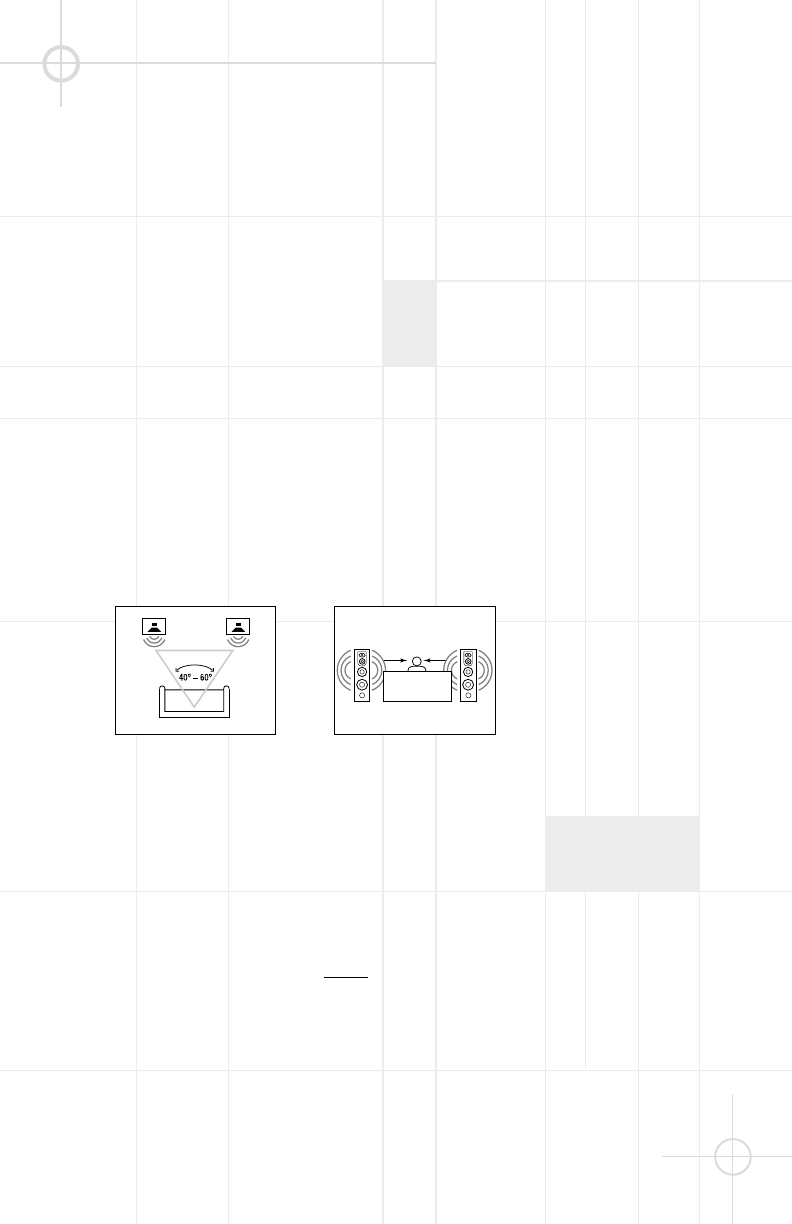
3
THANK YOU FOR CHOOSING JBL
For more than 50 years, JBL
has been involved in every
aspect of music and film
recording and reproduction,
from live performances to
the recordings you play in
your home, car or office.
We’re confident that the
JBL loudspeakers you have
chosen will provide every
note of enjoyment that you
expected – and that when
you think about purchasing
additional audio equipment
for your home, car or
office, you will once again
choose JBL.
Please take a moment to
complete the enclosed
profile card. It enables us to
keep you posted on our
latest advancements,
and helps us to better
understand our customers
and build products that
meet their needs and
expectations.
JBL Consumer Products
Proper placement of the
speakers is an important
step in obtaining the most
realistic soundstage
possible. These recommen-
dations are for the optimal
placement of the loud-
speakers. Use them as a
guide. Slight variations will
not diminish your listening
pleasure.
The S412P
II loudspeakers
are video-shielded and can
safely be placed near a
television.
SPEAKER PLACEMENT
The S412PII speaker features
four rubber feet that enable
it to be placed on a smooth-
surfaced floor, such as tile
or hardwood. Four metal
spikes are supplied for use
when the speaker is to be
placed on a carpeted
surface to decouple the
speaker from the floor and
prevent unwanted damping.
To insert the spikes, gently
lay the speaker on its side
(not its front or back) on a
soft, nonabrasive surface.
Each spike screws into the
threaded insert in the center
of each rubber foot. Make
sure all four spikes are
screwed in completely for
stability.
NEVER drag the speaker to
move it, as this will damage
the spikes, the feet and/or
the wood cabinet itself.
Always lift the speaker and
carry it to its new location.
CAUTION: Floorstanding
(tower) loudspeakers have
a high center of gravity and
may become unstable and
tip over during earthquakes
or if rocked, tipped or
improperly positioned. If this
is a concern, these speakers
should be anchored to the
wall behind them, using
the same procedures and
hardware customary for
anchoring bookcases and
wall units. Customer is
responsible for proper
installation and proper
selection of hardware.










